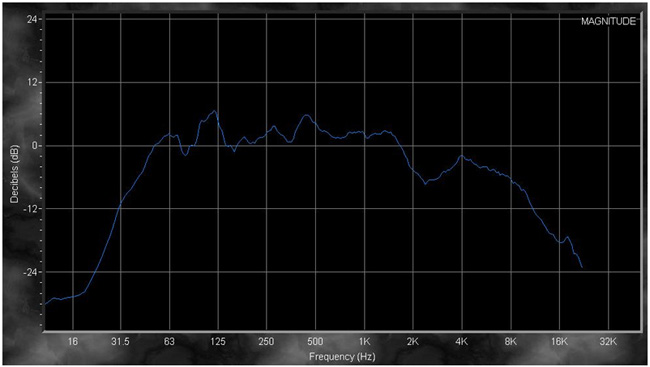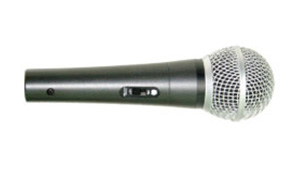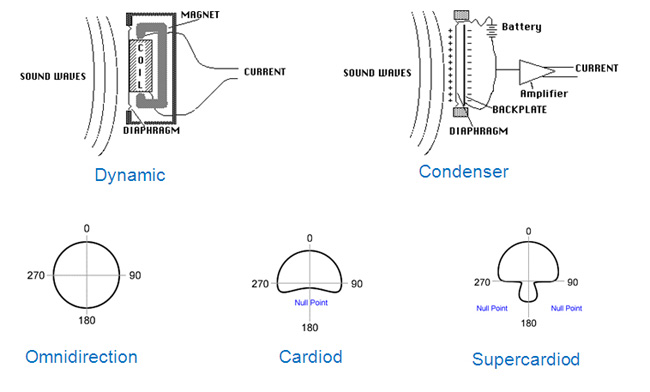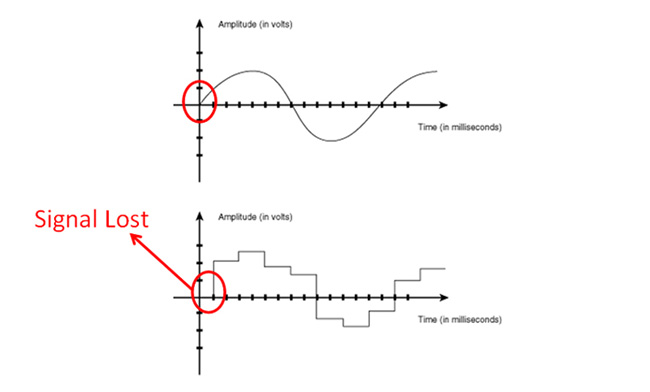Basic Sound System Design
A good sound system should be:-
- Clean
- Clear
- Intelligible
- Natural
- Balanced
- Evenly dispersed
- Adequate
A good sound should be noiseless, clearly recognizable, comprehensive frequencies and even coverage. One big misconception in audio is that loudness means good. It may sounds impressive but ultimately, high level can interfere the characteristic of good sound system.
While measurement for length, weight and temperature are universally known, many are clueless on the measurement of sound. We have centimeter for length, kilogram for weight and Celsius for temperature. In sound, we have bel and decibel (dB). 10 bel are equivalent to 1 decibel. A quiet living room is 40 dB, a noisy restaurant is 70 dB and a rock concert is 110 dB. With these references, you can easily figure out the loudness of certain decibel.r
One term we will usually encounter in audio industry is "frequency response". Human hearing can listen/feel the sound from 20 Hz to 20 kHz. The loudness of each frequencies is measured by magnitude in decibel. Higher the magnitude means high loudness. "Frequency response" is a graph representative of the loudness (in dB) of each frequencies from 20 Hz to 20 kHz. Frequencies from 5 kHz to 20 kHz have higher magnitude than the rest of the lower frequencies' magnitude, this mean the sound system is having a higher treble or higher pitch. A higher magnitude at the lower frequencies means higher bass. In another interpretation, a "frequency response" is another mean of representation how does the sound is like. We not only can hear the sound, we can see it as well.replica handbags wholesale

Frequency Response Graph
There are 3 steps in sound reproduction. The first is the sources input. This is produced either by pre-recorded sources or live sources. Second, the sound are processed by manipulating, cutting, mixing, boosting and reducing the sound. Finally, the "final" sound is outputted to everyone for hearing.

There are plenty type of input sources. Example of pre-recorded sources are DVD Player, Tape Player, Tuner and Computer. Typical live sources are musical instruments, microphones and wireless microphone. Microphone is a device that converts variations in sound into a variations in voltage. In other words, it convert sound into an electrical form. There are 3 common technologies in microphone which are dynamic microphone, condenser microphone and piezoelectric microphone. In dynamic microphone, there is a magnet and a coil inside. The sound pressure will move the sensitive coil and this movement will produce small electrical due to magnetic field from the magnet. For condenser microphone, the sound pressure will influence the reactance of a capacitor in the electric circuit. One condition for this technology is that the capacitor must be supplied with power. We called this phantom power. Piezoelectric technology utilize piezoelectric element which will distorted by sound pressure to produce electric signal. However, this technology is rare in audio industry.
In audio industry, dynamic microphone and condenser microphone are easily available. How do you choose microphone? A dynamic microphone is exceptionally good for vocals and music instruments that do not need exceptional high frequency response. Meanwhile, a condenser microphone, it is very good for quiet instruments that need high frequency detail. Next, it is important to select a pickup pattern or polar pattern of a microphone. Few typical polar patterns are omnidirectional, cardiod, hypercardiod and supercardiod. An omnidirectional microphones has a equally sensitivity towards sound regardless of the direction. An omnidirection microphone able to pickup sound from front, back, left and right of the microphone. A cardiod has sensitive sound pickup in front of the diaphragm, less sensitive from sides and not sensitive at behind. With this, all noise from audience (behind) will not easily picked up by microphone. Hypercardiod is quiet similar to cardiod with much narrower pattern and small region of increases sensitibity from behind. Supercardiod is something in between cardiod and hypercardiod with slightly wider pattern and lower rear sensitivity.

Next equally important equipment, the audio mixer. Audio mixer function as combiner two or more separate signals becoming a signal. It simply combines various type of signals with different levels. How do we choose mixer? Basically, we choose based on number of mic inputs. Then, we look into number of stereo inputs available, number of Groups and Auxes and Built-in FX. These are typical feature demanded by most users but ultimately it depends on one requirement. Others least important feature are channel inserts, group and mix inserts, Auxes Return and Channel Directs Outs.
Signal processors are normally connected after audio mixer. Be it be Graphic Equalizer, Compressor, Limiter, Expander, Noise and Crossover. All signal processors function as their name indicate. A Graphic Equalizer is a hardware representative of a magnitude vs frequency graph. Over the horizontal, there are 31 band frequencies. Over the y-axis or vertical, it signify magnitude in dB either +/- 6 dB or +/- 12 dB. Meanwhile, a Compressor reduces dynamic range which are the quietest and loudest frequencies of a signal. A limiter prevents the signal from exceeding a threshold thus protecting the system. An Expander is opposite of compressor. It increases the dynamic range of a signal. A noise gate will mutes the signal when it falls below a threshold thus eliminate the low volume noises. Crossover divides a signal into 2 or 3 frequency bands and feed them into different speaker for better sound. Signal processors ultimately process the sound to become better quality.
With emerging digital technology replacing analogue technology, we have to clearly identify the pros and cons of each technology. Neither is perfect but the knowledge on these technologies will helps to get the best technology to suits users need. Typically, digital technology can have multiple features build into a unit. It has ability to save setting. It also permit of numerous setting to be stored into the ROM and recall the setting at will. Digital technology also more accurate and precise compare to analogue. Disadvantages of digital product are the high learning curve, adhoc tuning is complicated and time-consuming and confusing user experience due to abundance of features. The disadvantages of digital are the advantages of analogue. It has well accepted and easy operation. Ad-hoc tuning is possible due to the easy operation. It also packed with important features which is sufficient enough for daily usage. The downside is that analogue product setting will be easily messed up. Only one setting is possible due to no ROM for storage. Finally, it has less features compare to digital.

After signal is processed, it will be fed to amplifier. Amplifier will applies gain to a signal. It magnify the line-level signal and reproduces it in a form that will drive a loudspeaker. First thing when choosing an amplifier, we must identify the class of the amplifier. Typical classes in the market are Class A, Class B, Class AB, Class H and Class D. Output signal of a class A is driven by a single DC power supply which ultimately causes heat problem. Class B output signal is driven by a split DC power supply but this will produce many distortion. Class AB is a modified version with changes to switching supply. This is proven to be more reliable design and reduce many problem faced by Class A and Class B. Hence, many of the amplifier in market is in Class AB. Class H is a more refine than Class AB. Since Class AB is a switching supply, when the supply switch from upper quadrant to lower quadrant, it creates a distortion. this phenomenon is called crosstalk distortion. Class H solves this problem. Finally a Class D. It is also called a digital version or switching amplifier. The most apparent advantage is light weight. Overall, the sound quality is not as good as Class H and Class AB. For starters, choose Class AB and Class H amplifiers. Choose Class D when you require lightweight.
One essential knowledge on amplifier is the resistance in ohm that can the amplifier can support. In professional sound, an 8 ohm amplifier is common. Normally these amplifier can run under 4 ohm and very few can run under 2 ohm. 8 ohm, 4 ohm and 2 ohm? What is that? Impedance is the name given for speaker's total opposition to AC current flow that it presents to output of power amplifier. In loudspeaker, there is be 1 speakon input and 1 speakon output at its rear. When first loudspeaker' speakon input is connected to amplifier and the speakon output to second loudspeaker's speakon input, we have successfully 'loop' 2 loudspeakers. This kind of looping will results a 4 ohm load to the amplifier. If we loop 3 loudspeakers, the result will be 2.67 ohm. Simply said, it is safe to drive 4 speakers with an amplifier. Many product in market can do this and very few can drive 6 speakers with an amplifier. So check out the spec of the amplifier the minimum resistance it can handle.

Loudspeaker convert electrical energy into acoustic energy. Although similar principles applied to all kinds of loudspeakers, there are difference in the way they are used. There are fullrange loudspeaker, multi-enclosure loudspeaker, monitors and others. A fullrange speaker is a single cabinet in which one or more individual drivers in it. It is usually equipped together with passive crossover. Fullrange loudspeaker will produce the entire range of frequencies. Multi-enclosure is where subwoofer comes in. Using separate cabinet, certain signal and frequency is isolated to a particular cabinet to produce the sound. With this method, it will create better, comfortable and pleasant sound. Monitor is in wedge shape. It is specialize to produce sound for the performers on stage for their hearing. Normally, monitor are running in fullrange but different equalization than Front-of-House speaker.
For beginner or smart beginner, industry standard power rating is a must-know knowledge. There are 3 industry ratings. There are RMS power, Program Power and Peak Power. A RMS power is based on AES Standard. The loudspeaker is driven 8 hours without stop and problem. This is a proven power and pairing appropriately with the loudspeaker, it is guarantee no problem will occur. Program power is also called handling power. It's two times of RMS power. These is the best reading for amplifier matching and provide sufficient power, kick and punch to the sound. Finally, the peak power is the maximum power that can be handled by a loudspeaker. It's 4 times of RMS power. This power is instantaneous and loudspeaker is able to sustain this power for less than a second. Longer than that, loudspeaker will burn.
You have equipped yourself with reliable and useful knowledge. Thank you for your time reading this and hopefully you will improve more on professional sound system.
By,
Eric Chee
IVA Product Specialist
- Clean
- Clear
- Intelligible
- Natural
- Balanced
- Evenly dispersed
- Adequate
A good sound should be noiseless, clearly recognizable, comprehensive frequencies and even coverage. One big misconception in audio is that loudness means good. It may sounds impressive but ultimately, high level can interfere the characteristic of good sound system.
While measurement for length, weight and temperature are universally known, many are clueless on the measurement of sound. We have centimeter for length, kilogram for weight and Celsius for temperature. In sound, we have bel and decibel (dB). 10 bel are equivalent to 1 decibel. A quiet living room is 40 dB, a noisy restaurant is 70 dB and a rock concert is 110 dB. With these references, you can easily figure out the loudness of certain decibel.r
One term we will usually encounter in audio industry is "frequency response". Human hearing can listen/feel the sound from 20 Hz to 20 kHz. The loudness of each frequencies is measured by magnitude in decibel. Higher the magnitude means high loudness. "Frequency response" is a graph representative of the loudness (in dB) of each frequencies from 20 Hz to 20 kHz. Frequencies from 5 kHz to 20 kHz have higher magnitude than the rest of the lower frequencies' magnitude, this mean the sound system is having a higher treble or higher pitch. A higher magnitude at the lower frequencies means higher bass. In another interpretation, a "frequency response" is another mean of representation how does the sound is like. We not only can hear the sound, we can see it as well.replica handbags wholesale

Frequency Response Graph
There are 3 steps in sound reproduction. The first is the sources input. This is produced either by pre-recorded sources or live sources. Second, the sound are processed by manipulating, cutting, mixing, boosting and reducing the sound. Finally, the "final" sound is outputted to everyone for hearing.

There are plenty type of input sources. Example of pre-recorded sources are DVD Player, Tape Player, Tuner and Computer. Typical live sources are musical instruments, microphones and wireless microphone. Microphone is a device that converts variations in sound into a variations in voltage. In other words, it convert sound into an electrical form. There are 3 common technologies in microphone which are dynamic microphone, condenser microphone and piezoelectric microphone. In dynamic microphone, there is a magnet and a coil inside. The sound pressure will move the sensitive coil and this movement will produce small electrical due to magnetic field from the magnet. For condenser microphone, the sound pressure will influence the reactance of a capacitor in the electric circuit. One condition for this technology is that the capacitor must be supplied with power. We called this phantom power. Piezoelectric technology utilize piezoelectric element which will distorted by sound pressure to produce electric signal. However, this technology is rare in audio industry.
In audio industry, dynamic microphone and condenser microphone are easily available. How do you choose microphone? A dynamic microphone is exceptionally good for vocals and music instruments that do not need exceptional high frequency response. Meanwhile, a condenser microphone, it is very good for quiet instruments that need high frequency detail. Next, it is important to select a pickup pattern or polar pattern of a microphone. Few typical polar patterns are omnidirectional, cardiod, hypercardiod and supercardiod. An omnidirectional microphones has a equally sensitivity towards sound regardless of the direction. An omnidirection microphone able to pickup sound from front, back, left and right of the microphone. A cardiod has sensitive sound pickup in front of the diaphragm, less sensitive from sides and not sensitive at behind. With this, all noise from audience (behind) will not easily picked up by microphone. Hypercardiod is quiet similar to cardiod with much narrower pattern and small region of increases sensitibity from behind. Supercardiod is something in between cardiod and hypercardiod with slightly wider pattern and lower rear sensitivity.

Next equally important equipment, the audio mixer. Audio mixer function as combiner two or more separate signals becoming a signal. It simply combines various type of signals with different levels. How do we choose mixer? Basically, we choose based on number of mic inputs. Then, we look into number of stereo inputs available, number of Groups and Auxes and Built-in FX. These are typical feature demanded by most users but ultimately it depends on one requirement. Others least important feature are channel inserts, group and mix inserts, Auxes Return and Channel Directs Outs.
Signal processors are normally connected after audio mixer. Be it be Graphic Equalizer, Compressor, Limiter, Expander, Noise and Crossover. All signal processors function as their name indicate. A Graphic Equalizer is a hardware representative of a magnitude vs frequency graph. Over the horizontal, there are 31 band frequencies. Over the y-axis or vertical, it signify magnitude in dB either +/- 6 dB or +/- 12 dB. Meanwhile, a Compressor reduces dynamic range which are the quietest and loudest frequencies of a signal. A limiter prevents the signal from exceeding a threshold thus protecting the system. An Expander is opposite of compressor. It increases the dynamic range of a signal. A noise gate will mutes the signal when it falls below a threshold thus eliminate the low volume noises. Crossover divides a signal into 2 or 3 frequency bands and feed them into different speaker for better sound. Signal processors ultimately process the sound to become better quality.
With emerging digital technology replacing analogue technology, we have to clearly identify the pros and cons of each technology. Neither is perfect but the knowledge on these technologies will helps to get the best technology to suits users need. Typically, digital technology can have multiple features build into a unit. It has ability to save setting. It also permit of numerous setting to be stored into the ROM and recall the setting at will. Digital technology also more accurate and precise compare to analogue. Disadvantages of digital product are the high learning curve, adhoc tuning is complicated and time-consuming and confusing user experience due to abundance of features. The disadvantages of digital are the advantages of analogue. It has well accepted and easy operation. Ad-hoc tuning is possible due to the easy operation. It also packed with important features which is sufficient enough for daily usage. The downside is that analogue product setting will be easily messed up. Only one setting is possible due to no ROM for storage. Finally, it has less features compare to digital.

After signal is processed, it will be fed to amplifier. Amplifier will applies gain to a signal. It magnify the line-level signal and reproduces it in a form that will drive a loudspeaker. First thing when choosing an amplifier, we must identify the class of the amplifier. Typical classes in the market are Class A, Class B, Class AB, Class H and Class D. Output signal of a class A is driven by a single DC power supply which ultimately causes heat problem. Class B output signal is driven by a split DC power supply but this will produce many distortion. Class AB is a modified version with changes to switching supply. This is proven to be more reliable design and reduce many problem faced by Class A and Class B. Hence, many of the amplifier in market is in Class AB. Class H is a more refine than Class AB. Since Class AB is a switching supply, when the supply switch from upper quadrant to lower quadrant, it creates a distortion. this phenomenon is called crosstalk distortion. Class H solves this problem. Finally a Class D. It is also called a digital version or switching amplifier. The most apparent advantage is light weight. Overall, the sound quality is not as good as Class H and Class AB. For starters, choose Class AB and Class H amplifiers. Choose Class D when you require lightweight.
One essential knowledge on amplifier is the resistance in ohm that can the amplifier can support. In professional sound, an 8 ohm amplifier is common. Normally these amplifier can run under 4 ohm and very few can run under 2 ohm. 8 ohm, 4 ohm and 2 ohm? What is that? Impedance is the name given for speaker's total opposition to AC current flow that it presents to output of power amplifier. In loudspeaker, there is be 1 speakon input and 1 speakon output at its rear. When first loudspeaker' speakon input is connected to amplifier and the speakon output to second loudspeaker's speakon input, we have successfully 'loop' 2 loudspeakers. This kind of looping will results a 4 ohm load to the amplifier. If we loop 3 loudspeakers, the result will be 2.67 ohm. Simply said, it is safe to drive 4 speakers with an amplifier. Many product in market can do this and very few can drive 6 speakers with an amplifier. So check out the spec of the amplifier the minimum resistance it can handle.

Loudspeaker convert electrical energy into acoustic energy. Although similar principles applied to all kinds of loudspeakers, there are difference in the way they are used. There are fullrange loudspeaker, multi-enclosure loudspeaker, monitors and others. A fullrange speaker is a single cabinet in which one or more individual drivers in it. It is usually equipped together with passive crossover. Fullrange loudspeaker will produce the entire range of frequencies. Multi-enclosure is where subwoofer comes in. Using separate cabinet, certain signal and frequency is isolated to a particular cabinet to produce the sound. With this method, it will create better, comfortable and pleasant sound. Monitor is in wedge shape. It is specialize to produce sound for the performers on stage for their hearing. Normally, monitor are running in fullrange but different equalization than Front-of-House speaker.
For beginner or smart beginner, industry standard power rating is a must-know knowledge. There are 3 industry ratings. There are RMS power, Program Power and Peak Power. A RMS power is based on AES Standard. The loudspeaker is driven 8 hours without stop and problem. This is a proven power and pairing appropriately with the loudspeaker, it is guarantee no problem will occur. Program power is also called handling power. It's two times of RMS power. These is the best reading for amplifier matching and provide sufficient power, kick and punch to the sound. Finally, the peak power is the maximum power that can be handled by a loudspeaker. It's 4 times of RMS power. This power is instantaneous and loudspeaker is able to sustain this power for less than a second. Longer than that, loudspeaker will burn.
You have equipped yourself with reliable and useful knowledge. Thank you for your time reading this and hopefully you will improve more on professional sound system.
By,
Eric Chee
IVA Product Specialist